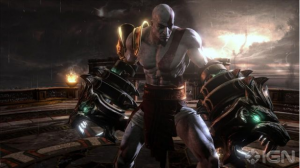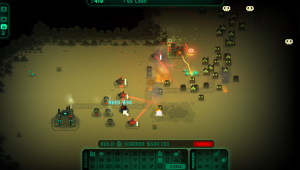Having played video games for so many years and now examining the Game Industry itself, I tend to hear some comments over and over again that just aren’t true. For this post, I want to bust a few myths about the industry that both enthusiasts and members of the industry often say.
Piracy:
When it comes to piracy in the Game Industry, there are two big myths that publishers and designers sometimes believe in.
First is that a great enough game is piracy proof. In the sense that if they make a game that is so good and so well received, that no one will have a problem with it and have the desire to pirate it. This is unfortunately BS as there are always people who will pirate a game regardless of its quality.
I’ve met a few people like that in my time: They had great jobs, more than enough money to buy these games and yet they would pirate everything that they could get their hands on. Simply put, there was no reaching them and they couldn’t care less if a game was $5 or $50, if they wanted to play it, they were going to pirate it.
They may legitimately buy a few games here and there but given the chance they will always pirate. And there is nothing that you or anyone else in the Game Industry can say to change their minds.

When copy protection fails it upsets the legitimate customers while the pirates get away scott free.
The second piracy myth is that copy protection and DRM is the answer to everything and you are dooming yourself if you ever release a PC game without copy protection.
Publishers and developers alike have talked about how piracy is one of the biggest threats to the Game Industry and that they needed to use copy protection like Starforce, Securom and other annoying systems in order to circumvent that.
The fact is that while piracy is a big deal, these copy protection systems simply don’t work as intended. The hackers will find a way around them leaving the consumers left to deal with jumping through the annoying hoops. In this way, copy protection drives people to piracy and hacks as a way to get around this issue than selling more copies.
The best copy protection systems that would completely stop a game from being pirated would also mean the most headaches for the consumer. Or they would only stop the game from being pirated for a short time before it is cracked.
This is one of the big reasons why Steam was so amazing and revitalized the PC industry. Because Steam itself is DRM or copy protection, Valve built all the secondary features and community into it to give it value. In that way, people knowingly and enthusiastically use Steam for its features while having a form of DRM that the consumer wants and developers can make use of without worry.
Power Fantasy:
I’ve talked about this plenty of times but people still believe in this myth and that it’s okay to feature sexualize women in games with over the top men as you’re simply balancing the eye candy for both genders.
This is wrong pure and simple and it goes back to the power fantasy concept. These beef heads are designed to be a male power fantasy just as the gorgeous women who run around mostly naked are as well. The women are window dressing while the men are supposed to make you feel powerful. You’re playing as this macho bad-ass who women want him and men want to be him.
I have a feeling that someone is going to bring up Dragon’s Crown as it did feature both sexes exaggerated to unrealistic proportions.
It’s one of those cases where there are merits from both sides of the debate. For me, I’m going to go back to what I said in my analysis of it and that is while both sexes were sexualized, there were more examples of women than there were men in that game.
Now I know that some of you are going to argue and say that women find exaggerated men attractive or that you are a woman who finds this sexy and that nullifies the argument, unfortunately for you it doesn’t. Given the vast variety of tastes, there are probably women out there who do find these muscular guys attractive.
But that doesn’t change the fact that the designer and artists making these characters weren’t thinking at all about the female fans. They were still thinking about the male power fantasy and designing their characters in such a way to appeal to that audience. Is it possible to create a game that sexualizes both genders evenly? Maybe, but that’s a very touchy subject that is beyond the scope of this piece.
Sales:
Depending on who you talk to, sales are either saving the industry and the greatest thing ever or ruining the industry and bringing about the end of the world.
The fact of the matter is that sales aren’t either one of those things. Instead they have in a sense become the equalizer when it comes to selling video games.
Gamers are spending more money on games, but less on each individual title. You can see that it’s good from a consumer standpoint but can be trouble for developers.
The recent post from Puppy games detailing how horrible sales are and how it’s not creating fans is an extreme example. But here’s the truth about sales: they’re not meant to be relied on as the main profit structure of a game.
Good games are able to sell themselves with a little advertising and more importantly a good game will create a fan base. Fans as we’ve talked about on previous posts are the people who will buy your game day one and support you as a developer. To them sales are meaningless and that’s a very important element to know.
What sales however do are two things: One, they are aimed at the non fans and two; they provide your game with additional advertising past its shelf life. A sale will not turn a crappy game into a best seller, instead they are meant to supplement your income from selling to your fans.
All video games like commercial products deprecate in value over time and sales are just a way of speeding up that process. A sale may turn a loser into a game that will break even, but if the game is not a winner to begin with, don’t expect any miracles.
Paradox Interactive was one of many niche indie companies who recently got into sales over the last few years. They have a very hardcore following with their titles and know that their fans will buy their games day one. But the sales are opening up their titles to new gamers and hopefully in the process make new fans.
A great video game is a great video game and an unintended side effect of game sales is that it’s forcing indie developers to raise the bar on their games.
With so many developers now selling games, you need to do more than just release a simple platformer or a Pong remake and expect to get $10 or more out of it.
You either need to focus on quantity with a variety of small cheap titles such as Adult Swim Games product line, or go for quality titles like Prison Architect, Planetary Annihilation and so on.
On one hand, this means that we as the consumer are going to be treated to higher quality games from developers who can make it work. On the other hand, this is causing the bottom to drop out of the industry as the developers who can’t push forward with quality ideas are going to end up falling out of the industry which is sounding like what’s happening with Puppy Games.
That’s it… for now:
That just about does it for this post; I just really wanted to get these points off my chest. If you have any game industry related myths you want me to take a look at in another post, feel free to mention them in the comments below.





